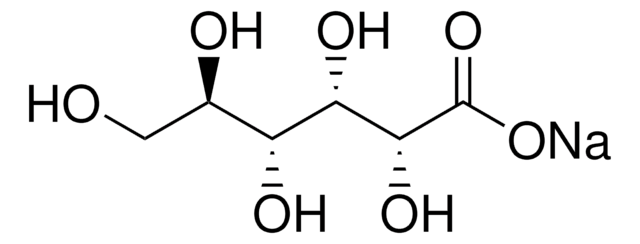219671
GlyH-101
≥97% (HPLC), solid, CFTR inhibitor, Calbiochem®
Synonym(s):
CFTR Inhibitor II, GlyH-101, N-(2-Naphthalenyl)-((3,5-dibromo-2,4-dihydroxyphenyl)methylene)glycine hydrazide
About This Item
Recommended Products
Product Name
CFTR Inhibitor II, GlyH-101, CFTR Inhibitor II, GlyH-101, CAS 328541-79-3, is a cell-permeable potent, selective and reversible open-channel blocker of CFTR (Ki = 4.3 µM in CFTR-expressing FRT cells).
Quality Level
assay
≥97% (HPLC)
form
solid
manufacturer/tradename
Calbiochem®
storage condition
OK to freeze
color
yellow
solubility
DMSO: 200 mg/mL
shipped in
ambient
storage temp.
2-8°C
SMILES string
Brc1c(c(cc(c1O)\C=N\NC(=O)CNc2cc3c(cc2)cccc3)Br)O
InChI
1S/C19H15Br2N3O3/c20-15-8-13(18(26)17(21)19(15)27)9-23-24-16(25)10-22-14-6-5-11-3-1-2-4-12(11)7-14/h1-9,22,26-27H,10H2,(H,24,25)/b23-9+
InChI key
RMBDLOATEPYBSI-NUGSKGIGSA-N
General description
Biochem/physiol Actions
CFTR
Warning
Reconstitution
Other Notes
Muanprasat, C., et al. 2004. J. Gen. Physiol.124, 125.
Legal Information
Storage Class
11 - Combustible Solids
wgk_germany
WGK 2
flash_point_f
Not applicable
flash_point_c
Not applicable
Certificates of Analysis (COA)
Search for Certificates of Analysis (COA) by entering the products Lot/Batch Number. Lot and Batch Numbers can be found on a product’s label following the words ‘Lot’ or ‘Batch’.
Already Own This Product?
Find documentation for the products that you have recently purchased in the Document Library.
Customers Also Viewed
Our team of scientists has experience in all areas of research including Life Science, Material Science, Chemical Synthesis, Chromatography, Analytical and many others.
Contact Technical Service










